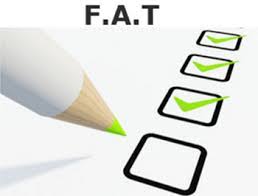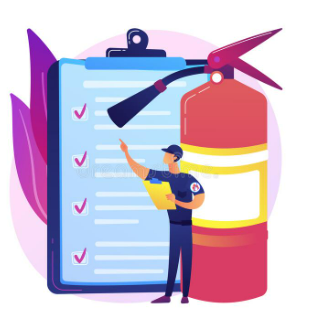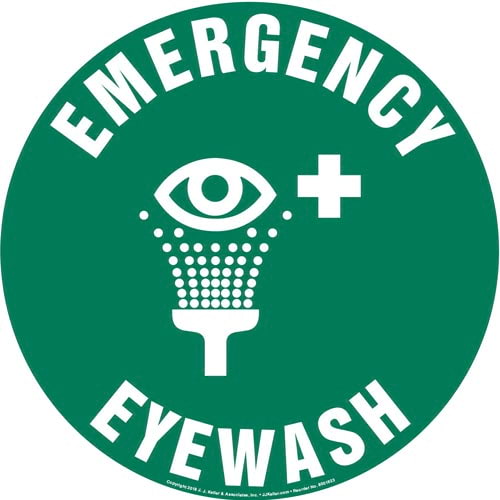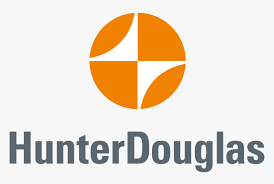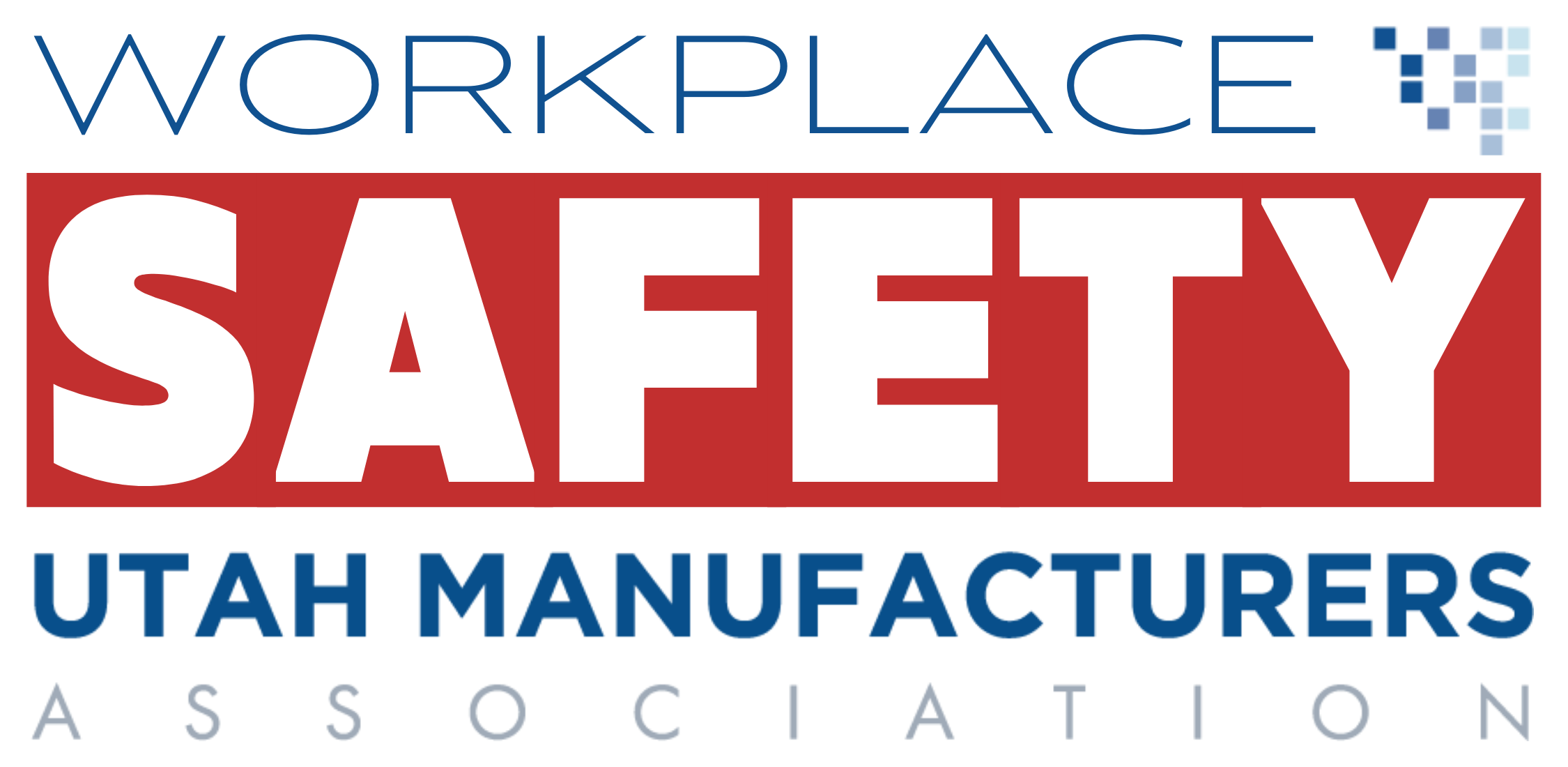Title Page
-
Company Name
-
Machine / Equipment name
-
Checklist being completed?
- Electrical Inspection Checklist
- Ergonomic Checklist
- Laser Inspection Checklist
- PLC Controls Checklist
- Mechanical Inspection Checklist
- Safety Hazard Identification
-
Select area of the plant equipment is located in
-
Inspection Conducted by (select all that are involved)
-
Enter Other participants here
-
Equipment Name
-
Manufacturer Name
-
Serial #
-
TAG #
-
Which checklist do you need?
- Safety Hazard Identification
- Ergonomic
- Mechanical Inspection
- Electrical Inspection
- PLC Controls
- Laser Inspection
Item
-
1. Has a machine safety risk assessment been conducted?
REQUIREMENTS FOR ALL SAFEGUARDS
-
2. Do the safeguards provided meet the minimum OSHA requirements?
-
3. Do the safeguards prevent workers' hands, arms, and other body parts from making contact with dangerous moving parts?
-
4. Are the safeguards firmly secured and not easily removable?
-
5. Do the safeguards ensure that no objects will fall into the moving parts?
-
6. Do the safeguards permit safe, comfortable, and relatively easy operation of the machine?
-
7. Can the machine be serviced without removing the safeguards?
-
8. Is there a system for shutting down the machinery before safeguards are removed?
-
9. Can the existing safeguards be improved?
MECHANICAL HAZARDS - The point of operation
-
10. Is there a point-of-operation safeguard provided for the machine?
-
11. Does it keep the operators hands, fingers, body out of the danger area?
-
12. Could you suggest a more practical, effective safeguard?
-
13. Could changes be made on the machine to eliminate the point-of-operation hazard entirely?
MECHANICAL HAZARDS - Power transmission apparatus
-
14. Are there any exposed belts or chain drives?
-
15. Are there any exposed set screws, key ways, collars, etc.?
-
16. Are starting and stopping controls within easy reach of the operator?
-
17. If there is more than one operator, are separate controls provided?
NON-MECHANICAL HAZARDS
-
18. Have appropriate measures been taken to safeguard workers against noise hazards?
-
19. Have special guards, enclosures, or personal protective equipment been provided where necessary to protect workers from exposure to harmful substances used in machine operation?
ELECTRICAL HAZARDS
-
20. Is the machine equipped with e-stops? Do the e-stops function properly? Do the e-stops meet NFPA 79 standards? Are the e-stops easily accessible?
-
20-b. Do the e-stops function properly?
-
20 -c. Do the e-stops meet NFPA 79 standards?
-
20 -d. Are the e-stops easily accessible?
-
21. Do interlock switches meet OSHA standards for “Tamper Resistant”<br>(difficult to defeat)?
TRAINING
-
22. Has a Work Instruction for the equipment been written?
-
22 a. Have the operators been trained using this work instruction?
-
23. Has a JSA been completed that identifies hazards and how to control the hazards?
-
24. Has a safeguarding checklist been written and have operators been trained on inspections and procedures to follow if guards are damaged, missing, or inadequate?
PROTECTIVE EQUIPMENT AND PROPER CLOTHING
-
25. Is protective equipment or clothing required (glasses, hearing<br>protection, lab coat, steel-toed shoes, etc.)?
-
Required PPE
- Apron
- ARC Flash Gear
- Face Shield
- Fall Protection
- Gloves - Cut Resistant
- Gloves- Not Cut Resistant
- Gloves - Electrical Rated
- Gloves - Nitrile
- Hearing Protection
- Respirator
- Safety Glasses
- Safety Shoes
- Welding PPE
-
26. If protective equipment is required, is it appropriate for the job, in good<br>condition, kept clean and sanitary, and stored carefully when not in<br>use?
MACHINERY MAINTENANCE AND REPAIR
-
25. Is protective equipment or clothing required (glasses, hearing protection, lab coat, steel-toed shoes, etc.)?
-
Required PPE
- Apron
- ARC Flash Gear
- Face Shield
- Fall Protection
- Gloves - Cut Resistant
- Gloves- Not Cut Resistant
- Gloves - Electrical Rated
- Gloves - Nitrile
- Hearing Protection
- Respirator
- Safety Glasses
- Safety Shoes
- Welding PPE
-
26. If protective equipment is required, is it appropriate for the job, in good condition, kept clean and sanitary, and stored carefully when not in use?
WORK PROCESS HAZARDS
-
27. Have maintenance workers received up-to-date instruction on the machines they service?
-
28. Has a LOTO procedure been written and put on the Google drive?
-
29. Is the maintenance equipment itself properly guarded?
-
30. Have PM’s been written for the equipment?
WORK ENVIRONMENT
-
31. Are there materials on the floor that could trip a worker?
-
32. Is the lighting adequate?
-
33. Are there any live electrical hazards at the site?
-
34. Are any explosive materials used or stored at the site?
-
35. Are tools, including hand tools, machines, and equipment, properly maintained?
-
36. Is there excessive noise in the work area that might hinder worker communication?
-
37. Is fire protection equipment readily accessible? Have employees been trained to use it?
-
38. Are emergency exits clearly marked?
-
39. Are fork trucks or other motor vehicles properly equipped with brakes, overhead guards, backup signals, horns, steering gear and identification, as necessary?
-
40. Are all vehicles and equipment operators properly trained and authorized to use the machinery?
-
41. Have employees complained of headaches breathing problems, dizziness, strong odors, etc.?
-
42. Is there adequate ventilation?
WORK ENVIRONMENT cont.
-
43. Have tests been made for oxygen deficiency, toxic fumes, and other health hazards?
WORK PROCESS HAZARDS
-
44. Are work positions, machinery, pits or holes, and hazardous operations adequately guarded?
-
45. Is the worker wearing clothing or jewelry or long hair that could get caught in the machinery?
-
46. Are there fixed objects that may cause injury such as sharp machine edges?
-
47. Is the flow of work improperly organized? For example, is the worker required to make movements that are too rapid?
-
48. Can the worker get caught in or between machine parts?
-
49. Can reaching over moving machine parts or material injure the worker?
-
50. Is the worker off balance at any time?
-
51. Is the worker positioned to the machine in a way that is potentially dangerous?
-
52. Is the worker required to make movements that could cause hand or foot injuries, or strain from lifting?
-
53. Can an object strike the worker or lean against or strike a machine part or object?
-
54. Does the work produce environmental hazards - dust, chemicals, radiation, welding rays, heat, or excessive noise?
Dials, Display, Controls
-
Displays are easy to read
-
Displays and controls follow population stereotypes or are compatible
-
Labeling on controls and display panels is clear
-
Displays are adequately lit
-
Controls are within reach (69 inches maximum height)
-
Frequently used controls are between waist and eye level (30 to 62 inches)
-
Monitors are between 48 to 62 inches in height or are adjustable in height and tilt.
Physical Demands
-
Manual lifting on and off the machine is limited to between 18 and 52 inches
-
Manual lifting is less than 40 pounds
-
Lifting equipment is available for loads of 40 pounds or more
-
Team lifting for items greater than 60 inches in length and 25 pounds
-
Use of handling aids, such as drum cart, air hoist, scissors table for large, awkward or heavy loads
-
Out of body lifting is less than 15 inches (hand placement from body)
-
No static muscle loading
-
Ladder climbing is limited
-
Padding to avoid high pressure on hands or forearms from thin edge, such as pail handles, or sheet metal
-
Human control of machine for pacing of handling such as on and off of conveyors
-
Materials are easy to grasp
Workplace Characteristics
-
Anti-fatigue mats for operators
-
Forward reaching is less than 18 inches
-
Reaching is less than 72 inches (vertical height)
-
Machine design avoids use of awkward positions when exerting forces with hands/tools (routine tasks)
-
Clearance for handling tasks
-
Space for handling/lifting equipment
-
Space for temporary storage
-
Space for product carts
-
Avoidance of awkward body positions with human interface with machines
-
Dials and displays that are easy to reach or read
-
Efficient work motions because of workplace layout
-
Adjustable height table/surfaces are used when fine/medium dexterity is required on a frequent to constant basis (Assembly Areas)
Environment
-
Noise does not interferes with conversation or doing job
-
Noise is not annoying and distracting
-
Vibration is not annoying
-
Temperature/humidity comfortable and does not distract or interfere with the job
-
Good air circulation
-
Adequate lighting provided for the job
-
Glare does not interfere with reading or inspecting work
-
Static is not present
-
Floors are even, (no platforms, or steps in work area)
-
Floors: non-skid, drains
-
Hot surfaces are guarded and/or labeled
-
Personal Protective Equipment needed:<br>- Eye Protection<br>- Ear Protection<br>- Steel-toed Shoes<br>- Hand Protection(gloves)<br>- Protective Clothing
POWER TRANSMISSION EQUIPMENT
-
Are motors, bearings, shafts, pulleys/sprockets and other power transmission equipment securely mounted?
-
Are belt and/or chain paths properly aligned and tensioned?
-
Are there any exposed setscrews, key ways, collars, etc.?
EQUIPMENT GUARDING
-
Is adequate guarding in place to prevent access to moving parts, pinch points, hot surfaces and other mechanical hazards? Are pinch point labels in place? Are hot surfaces labels in place?
-
Are guards adequately secured? Do guards require a tool to remove?
-
Are guards interlocked? Are interlocks easily defeatable?
-
Do the guards ensure that no objects will fall into moving parts?
-
Do guards pose any kind of obstacle or hinder operation of the machine?
OPERATOR CONTROLS
-
Are proper E-Stop push buttons, pull cords or other means of stopping the equipment available in operator areas and near potential hazards?
-
Are operator controls easily accessible?
-
Do the controls to operate the machine keep the operator’s hands, fingers, body out of the danger area?
-
Are operator controls properly applied, labeled and color-coded per NFPA 79?
WORK AREA
-
Is adequate lighting provided in and around the equipment work areas?
-
Is the work area(s) free of trip hazards, overhead hazards or protrusions?
-
Has the area been evaluated for appropriate PPE use? If so, has the appropriate PPE been provided?
-
Is there a possibility the worker might sustain injury for lifting, pulling, or carrying heavy objects?
-
Is there excessive noise in the work area that would require hearing protection?
-
Are work platforms and/or ladders used? Adequate guard railing? Maximum weight capacities identified and labeled where applicable?
-
Do workers occasionally receive minor shocks while operating any of the machines?
-
Hazardous energy sources / LOTO
-
Electrical – Single/Multiple supply voltages? Disconnect(s) lockable?
-
Pneumatic – Valve(s) lockable or present & any pressure vessel needs to have a pressure release valve?
-
Where several maintenance persons work on the same machine, are multiple LOTO devices used?
-
Others – List additional sources and lock means
-
Potential energy/gravity sources?
-
Has a LOTO procedure been written and added to g: drive?
HOT SURFACES PROTECTION
-
Are Hot Surfaces (> 120 F°) adequately guarded, insulated and/or labeled?
-
Hot Melt adhesive systems
-
Thermolator piping
-
Ovens
-
Are Leisters adequately guarded and/or labeled?
-
Are thermolator (hot oil/liquid) hoses labeled to handle system temperature and pressure?
OTHER
-
Machine/ Equipment has a completed and released ECR drawing package.
LABELING
-
Machine label installed and correctly filled out (voltages, amps, SCCR …)?
-
SCCR documentation filled out and saved to g: drive?
-
All electrical enclosures and raceways labeled (on the outside cover) with all voltages (AC and/or DC) contained within the enclosure/raceway. All warning stickers are applied (hazardous, voltage), on all enclosures and raceways with 50 volts or higher?
-
Machine Disconnect labeled on outside with max fuse size and type and power source voltage, panel source name and breaker number(s)?
-
Control cabinet contains fuse schedule and/or circuit breaker schedule to include fuse size, type and class or CB size. All control components must be NRTL listed?
-
All receptacles installed on equipment labeled with power source panel name and circuit breaker number or fuse size?
-
Is Arc Flash Hazard Label(s) current and on machine?
-
8. Has an Electrical Risk assessment been completed?
POWER
-
Circuit breakers and or fuses correctly sized for total equipment amperage?
-
Circuit Breaker/fuse size:
-
Number of Poles:____
-
Conduit and Service wire sized correctly for total equipment amperage?
-
Conductor size:_______
-
Measured Full Load Amperage:_______
-
Neutral: ________ Amp
-
L1: ________ Amp
-
L2: ________ Amp
-
L3: ________ Amp
GROUND
-
Check resistance from earth ground to machine ground. Max allowed is 0.1 ohm.
-
Measured: _______ohms.
-
All receptacles and boxes are properly grounded per NEC. All receptacles are 15-ampere receptacles and protected by an over current protective device not greater than 15-amperes. Equipment receptacles must be GFCI protected?
-
All doors must be grounded and no grounds are double lugged.
GENERAL
-
All electrical covers are secured and no knockouts missing in boxes?
-
No wire nuts to be used on equipment.
-
Proper use of SO or flex cord where applicable, Proper use of connectors or strain relief’s on conduit, seal tight and SO cord and sized correctly?
-
Proper termination and numbering/labeling of wires? No splices in raceways and proper use of wire colors?
-
All electrical safety interfaces (E-stops and interlocks) tested and operational. Doors on control cabinets and junction boxes must be interlocked, require a tool to open, or lockable (key)?
-
Panel schedule updated to reflect equipment?
PLC/CONTROLS
-
Verify the Risk Assessment has been completed.
-
Verify Automation & Control (A&C) Risk Reductions have been completed according to RA.
-
Verify Safety PLC/Relay is programmed/wired correctly to achieve the appropriate performance level/Cat.
-
Verify Safety PLC/Relay is programmed/wired correctly to achieve the appropriate performance level/Cat.
-
Verify each E-stop provides an input signal to notify PLC.
-
All E-STOPS shall remove control power to output cards of components and air valves that present a hazard. Removing power cannot present a hazard.
-
Verify emergency stop pushbuttons are colored red with a yellow background.
-
No actions shall occur upon an E-Stop release.
-
Verify a reset does not initiate a restart or hazardous motion.
-
Verify that after machine power loss, the machine does not automatically start when power is restored.
-
Verify start does not occur when stop button is held and start button is pressed
-
Verify Run or Auto operation is inhibited during Jog mode.
-
Verify that resetting of an overload device does not restart the motor.
-
Verify that motor contactors and starters that initiate opposing motion are both mechanically and electrically interlocked to prevent simultaneous operation.
-
Verify all components are approved by a recognized third party such as UL, RU, CSA or TUV. CE is not acceptable.
-
Verify Light curtain/Safety scanner/door interlock stop times and distances have been recorded in RA.
-
Verify that Muting of light curtains/safety scanners have been accomplished in accordance with manufacturer requirements and RA.
-
Verify that light curtain blanking has been accomplished in accordance with manufacturer requirements and RA.
-
Two-hand controls are using a two-hand control relay or FB in safety PLC in accordance with manufacturer recommendations.
-
Verify SCCR documentation is complete.
-
Verify that Zero Speed controllers are wired in accordance with manufacturer’s recommendations and RA.
-
Verify STO or other safe motion modes are using correct FBs in accordance with manufacturer’s recommendations and are applied correctly according to RA.
-
Verify all door interlocks and non-contact switches use diversity and are compliant with the RA for the associated risk reduction requirements. Verify that these are “Tamper Resistant” and applied in accordance with manufacturer’s recommendations.
-
Verify all electrical schematics are complete and not red-lined. Verify the latest revision is released in Team Center.
-
Verify Keyed switches in the cabinet are implemented and documented correctly.
LASER HAZARD ANALYSIS
-
Has the LSO (Laser safety Officer) completed a ‘Laser Hazard Analysis’ for this type of laser machine? The ‘Laser Hazard Analysis’ should include:<br><br>- Software calculations for MPE (maximum permissible exposure) limits, minimum required OD (optical density) for protective eyewear, NHZ’s (nominal hazard zones) for various viewing conditions. <br>- A listing of potential hazards for the laser system<br>- A listing of control measures that must be in place to mitigate the hazards.<br>- This Laser Hazard Analysis should be on file with the LSO.<br>
GENERAL EQUIPMENT REVIEW
-
Is the laser securely mounted?
-
Is the laser (embedded laser) properly labeled with its classification?
-
Is the laser beam path fully enclosed or mostly enclosed with only a minimal gap between optics and work piece?<br><br>- There should be no large openings in the beam path where incidental contact with the beam is possible.
-
Is the machine (laser system) adequately labeled to identify laser hazards?<br><br>- Laser system classification label(s)<br>- Laser aperture label<br>- Guarding label(s)
-
Are there any visible diode lasers (spot or line alignment markers) used on the machine? If so, are they properly labeled (Class II or III) and properly applied to minimize incidental eye exposures?
-
Is an ‘assist gas’ (compressed air? nitrogen?) used? Is it properly applied?<br><br>- Is it a separate pressurized tank? Is it secured to the machine or other support means? Are adequate shut off valves & regulators in place?<br><br>- Is assist gas critical for proper operation? If so, are adequate controls (low pressure switch, flow switch) in place to notify or shut off machine if assist gas is compromised?
HAZARD CONTROL MEASURES
-
Has a Laser Hazard Area been established around the laser machine (required for all Class IV laser systems)? <br><br>- Is this area clearly marked and identified with proper signage? <br>- Is the area marking consistent with WFD practices (magenta/yellow striped floor tape, overhead signage)? <br>- Do the Laser Hazard Area markings identify an area adequate based on the NHZ (nominal hazard zone) calculations in the Laser Hazard Analysis?
-
Is proper PPE being worn within the Laser Hazard Area?<br><br>- Is the PPE clearly marked with adequate OD (optical density) at the laser in use wavelength?
-
Does the JSA for the job using the laser machine adequately address potential hazards and control measures?<br><br>- Is proper PPE identified?<br>- Are procedural controls for burn & skin hazard addressed?<br>- Are procedural controls for fire hazards addressed?<br>- Are LGAC (laser generated air contaminants) hazards addressed? (operator responsibilities)<br>- Are ALL hazards identified in the Laser Hazard Analysis adequately addressed?
-
Has basic ‘laser safety’ training been given to operators? Maintenance personnel?<br><br>- Do they understand the laser hazards?
LASER GENERATED AIR CONTAMINANTS (LGAC’S)
-
Is an exhaust system or ventilation provided to adequately remove LGAC’s from the work area?<br><br>- Is the exhaust/ventilation system effective? Does it appear to adequately remove LGAC’s from the work area?<br>- Are LGAC’s exhausted from the building or adequately ‘cleaned’/filtered before being returned to the room?
-
Has an evaluation been done of materials being processed with the laser to determine if any potentially hazardous LGAC’s might be present? (Examples: Are metals being cut/processed? PVC’s?)<br><br>- Consult with EHS. Should air sample testing be conducted?
-
Completed by
-
Position
- EHS Manager
- Engineer
- Operations Manager
- Maintenance Manager
- Electrician
- Safety Specialist
- Director of Operations
- Other:
- Director of Safety UMA
-
Enter Position
-
Signature of Lead Auditor:
-
Date Completed






